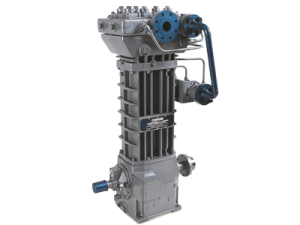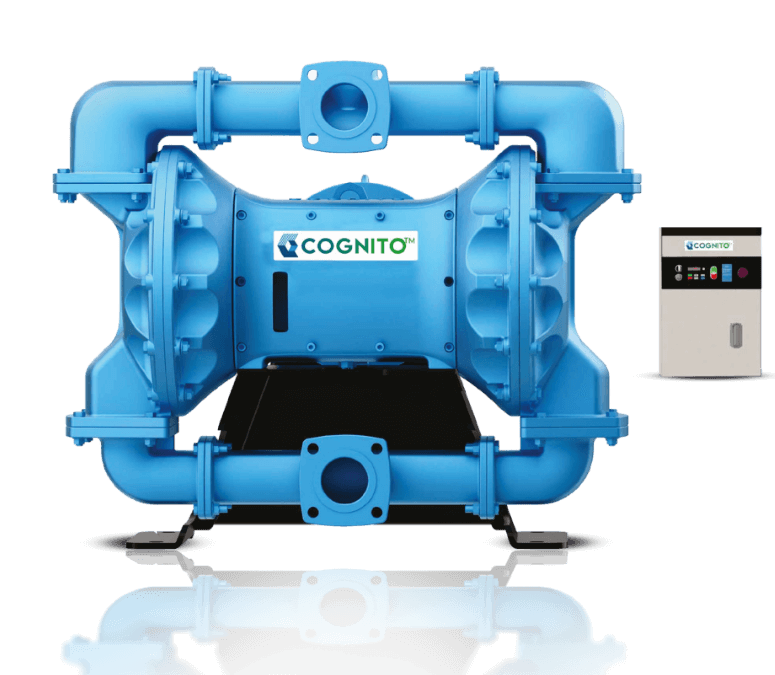Vertical vs Horizontal Compressor A Complete Guide 2023
Compressors are essential tools in various industries, providing compressed air for a wide range of applications. There are several types of compressors available, including horizontal and vertical compressors.
What is a Vertical Compressor?
A vertical compressor
is a type of compressor where the cylinder or cylinders are oriented
vertically. This design allows for a smaller footprint, making it an ideal
choice for applications where space is limited.
How does a vertical compressor work?
The basic working principle of a vertical compressor is the same as that of any
other type of positive displacement compressor. It works by trapping a fixed
volume of air or gas and then compressing it to increase its pressure.
In a reciprocating vertical compressor, for example,
a piston moves up and down inside a cylinder, drawing in air or gas on the
downstroke and compressing it on the upstroke. The compressed air or gas is
then discharged from the cylinder at a higher pressure.
The vertical orientation of the cylinders allows
for a smaller footprint, making vertical
compressors an ideal choice for applications where space is limited.
What is a Horizontal Compressor?
A horizontal
compressor is a type of compressor where the cylinder or cylinders are
oriented horizontally. This design allows for larger capacities and higher
pressures than vertical compressors.
How does a horizontal compressor work?
The basic working principle of a horizontal compressor is also the same as that
of any other type of positive displacement compressor. It works by trapping a
fixed volume of air or gas and then compressing it to increase its pressure.
In a reciprocating horizontal
compressor, for example, a piston moves back and forth inside a
cylinder, drawing in air or gas on the intake stroke and compressing it on the
compression stroke. The compressed air or gas is then discharged from the
cylinder at a higher pressure.
The horizontal orientation of the cylinders
allows for larger capacities and higher pressures than vertical compressors.
Horizontal compressors are commonly used in various industries, including oil
and gas, manufacturing, and transportation.
What is an LPG Compressor?
An LPG compressor
is a type of compressor specifically designed to compress liquefied petroleum
gas (LPG). These compressors are commonly used in the oil and gas industry to
transfer LPG from storage tanks to transport vehicles or to compress LPG vapour
for use as fuel.
How does an
LPG compressor work?
LPG compressors work by using vapour displacement to transfer
liquid LPG and for vapour recovery from LPG tanks. Many LPG piping systems
provide NPSH (Net Positive Suction Head) conditions that are not well suited to
liquid pumps. Compressors, being exposed solely to vapours, remain unaffected
by unfavourable NPSH conditions.
There are several types of LPG compressors available, including
reciprocating compressors, which use pistons to compress the gas. These
compressors pressurize the gas and increase its pressure, allowing LPG to be
transferred by way of vapor transfer and pressure difference.
What is a Reciprocating Compressor?
A reciprocating
compressor employs pistons to compress air or gas, functioning as a
positive displacement compressor. These compressors are commonly used in
various industries, including oil and gas, manufacturing, and transportation.
What is the
difference between a reciprocating compressor
and other types of compressors?
A reciprocating
compressor is a type of positive
displacement compressor that uses pistons to compress air or gas. These
compressors are commonly used in various industries, including oil and gas,
manufacturing, and transportation.
There are several other types of compressors
available, including rotary screw compressors, centrifugal compressors, and
axial compressors. Each type of compressor has its own advantages and
disadvantages, and the best type of compressor for a particular application
will depend on various factors such as the required capacity, pressure, and
operating conditions.
Reciprocating compressors are considered to be
the most energy-efficient type of compressor for most applications. They tend
to have a higher maintenance requirement compared to other types of compressors,
but they are also easier and cheaper to repair.
In comparison to centrifugal compressors,
reciprocating compressors operate at much higher efficiencies when the pressure
ratio is greater than 2. However, the best type of compressor for a particular
application will depend on various factors, such as the required capacity,
pressure, and operating conditions.
How do you
choose the best reciprocating compressor
for your needs?
When choosing a reciprocating
compressor, there are several factors to consider to ensure that you
select the best compressor for your needs. Some of the most important factors
that you must consider are:
• Capacity: The capacity of a compressor refers to the
amount of air or gas it can compress and deliver. Make sure to choose a
compressor with a capacity that meets your requirements.
• Pressure: The pressure rating of a compressor refers to
the maximum pressure it can deliver. Make sure to choose a compressor with a
pressure rating that meets your requirements.
• Power
source: Reciprocating
compressors can be powered by electricity, gasoline, or diesel fuel. Make sure
to choose a compressor with a power source that is readily available and
convenient for your application.
• Duty cycle: The duty cycle of a compressor refers to the
percentage of time it can operate before needing to rest. Make sure to choose a
compressor with a duty cycle that meets your requirements.
• Maintenance
requirements: Reciprocating
compressors require regular maintenance to operate at peak efficiency. Make
sure to choose a compressor with maintenance requirements that are manageable
for your application.
It's also important to consider the
manufacturer's reputation and the availability of replacement parts and service
when choosing a reciprocating compressor.
Reciprocating Compressor Manufacturers in India
There are several manufacturers of reciprocating
compressors in India. Some well-known manufacturers include Perfect Air
Compressor, KAESER COMPRESSORS (India) Pvt. Ltd., Corken, Trikoot Enterprises,
Colt Equipments Private Limited, Aar Vee Pneumatic Services, Premier
Compressor, Selwel Enterprises Private Limited, Aakash Engineering Works, and
Standard Engineering Company.
Reciprocating
Compressors by IDEX
Corken, a unit of IDEX Corporation, offers
high-quality reciprocating compressors. These compact compressors have a
horsepower range of 7.5 to 75 hp and are designed to be oil-free. Available in
both single and multistage configurations, they come in vertical and horizontal
designs with options for double (D-Style) or triple packing (T-Style). Corken's
reciprocating compressors are renowned for their outstanding performance,
reliability, and ease of maintenance. They are capable of handling a wide range
of gases, including toxic, volatile, hazardous, and corrosive substances.
Conclusion
Both horizontal and vertical compressors have
their own advantages and disadvantages, and the best type of compressor for a
particular application will depend on various factors such as the required
capacity, pressure, and operating conditions. Reciprocating compressors are
commonly used in various industries due to their versatility and reliability.





Comments
Post a Comment